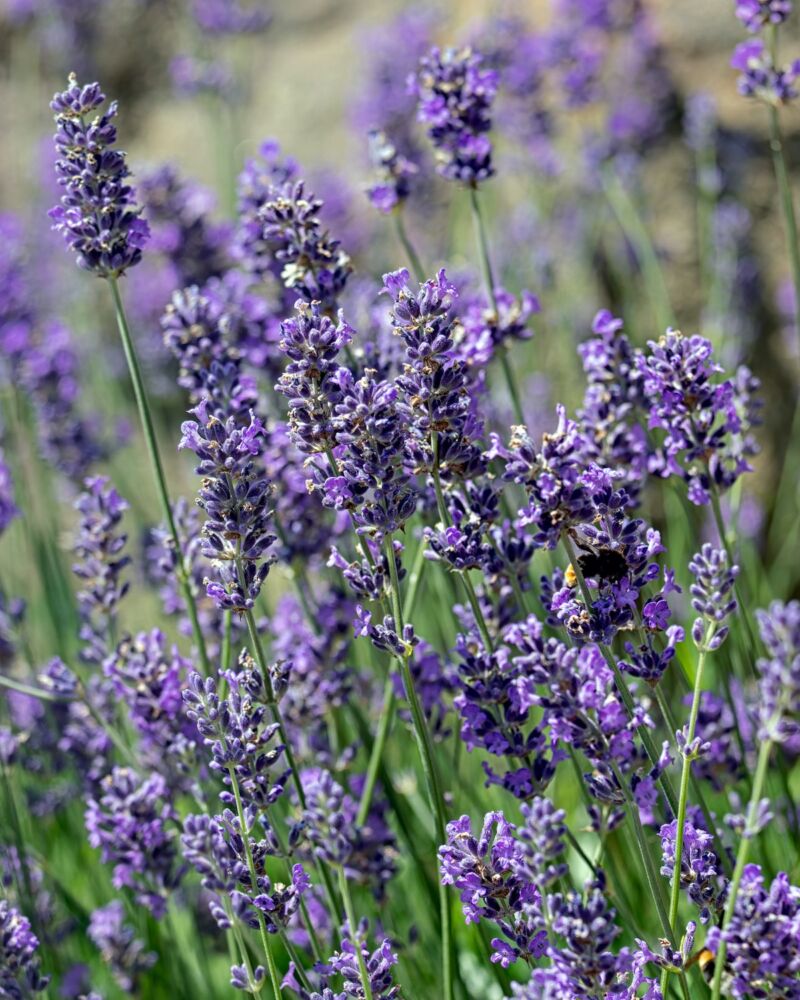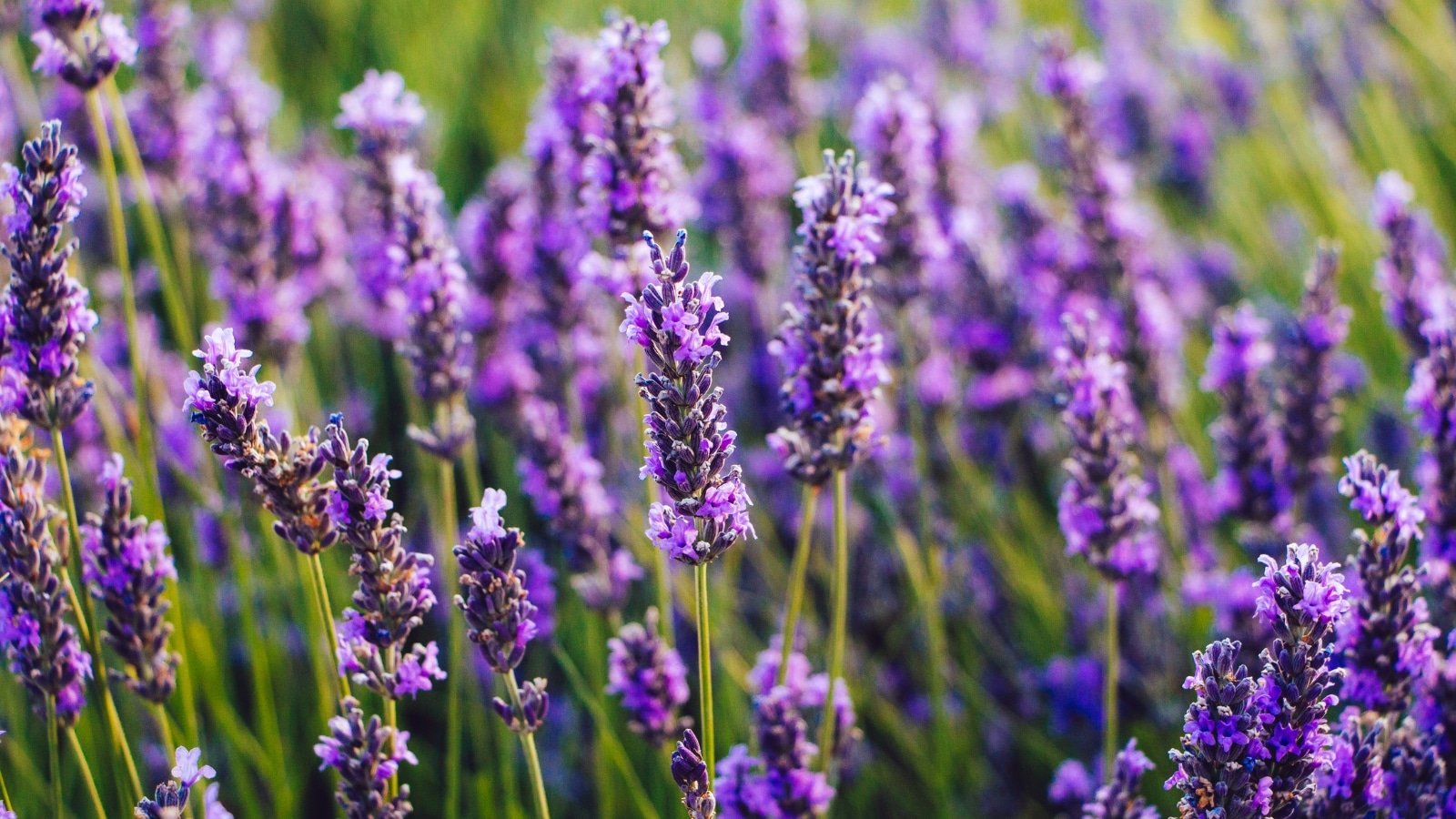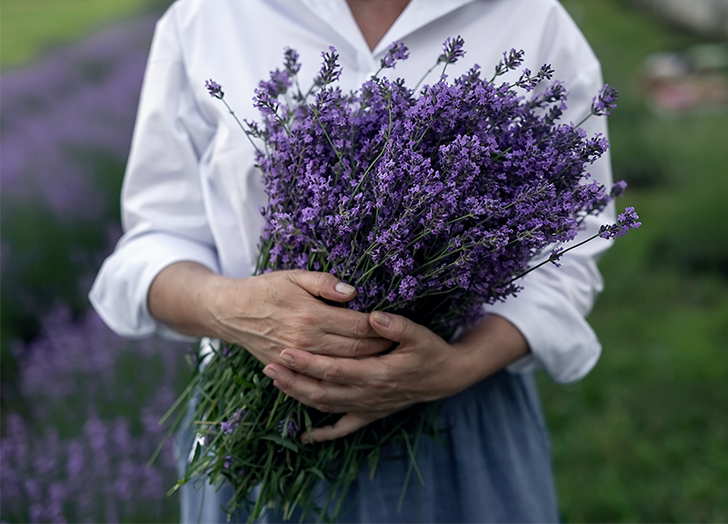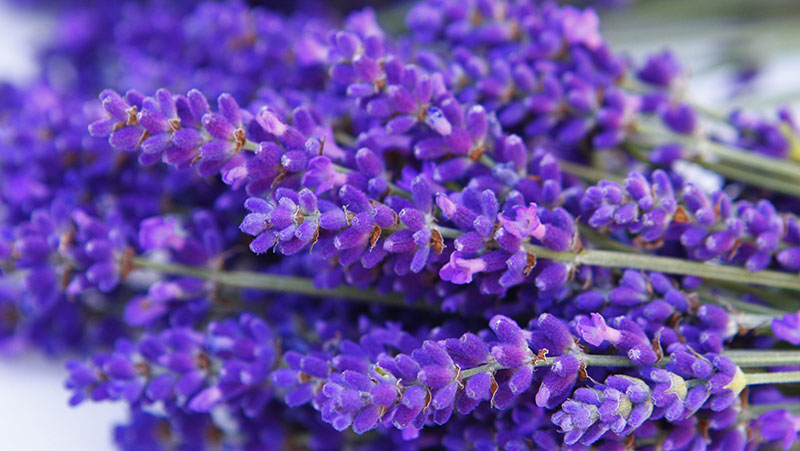Lavender is a beautiful plant known for its unique purple flowers and lovely fragrance. Surprisingly, the meaning and symbolism of lavender is complex and diverse, conveying different sentiments across various cultures throughout history. Broadly, the lavender flower represents spirituality, purity, elegance, tranquility and refreshing calm. Lavender flower meaning captures the essence of relaxation, peacefulness, devotion and love. Let’s explore some of the key meanings and symbolism associated with this popular flower.

Lavender Flower Meaning: Embracing Nature’s Beauty
Serenity and Calm
Lavender is not just a pretty flower, it also holds a special significance and meaning. The lavender plant, native to the Mediterranean region, has been used for centuries for its medicinal properties and has become a popular choice in gardens all around the world. However, what many people may not know is that this beautiful flower also holds a symbolic meaning, one that is deeply rooted in its history and uses.
One of the most common meanings attributed to the lavender flower is serenity, calmness, and tranquility. This is mainly because of its soothing purple shades and pleasant aroma. The soft and delicate color of lavender is known to have a calming effect on the mind and soul. In fact, the color purple has long been associated with spirituality and mindfulness, making lavender an ideal flower for creating a peaceful atmosphere.
The pleasant fragrance of lavender adds to its symbolism of calmness and relaxation. The aroma of lavender is gentle yet powerful, with its sweet and floral notes instantly uplifting the senses. Just inhaling the fragrance of lavender can induce a sense of inner peace and tranquility. For this reason, lavender has been used in aromatherapy as a natural remedy for stress, anxiety, and insomnia. Its calming effects are known to promote better sleep and reduce anxiety levels, making it a popular choice for relaxation therapies.
Lavender flowers are also associated with healing and purification. In ancient times, they were used to treat various ailments such as headaches, stomach pains, and even insect bites. Lavender was believed to have strong antiseptic and anti-inflammatory properties, making it a powerful healing herb. Today, lavender essential oil is still used for its soothing and therapeutic benefits, making it a staple in many households.
Apart from its association with relaxation and healing, lavender also holds symbolism in love and romance. In traditional folklore, lavender was believed to bring luck in love. It was often used in love potions and charms to attract the attention of a desired lover. In some cultures, lavender is also associated with devotion and loyalty, making it a popular flower for wedding bouquets and decorations.
The lavender flower meaning connected to tranquility and relaxation makes it the perfect gift for sending wishes of peace and calm. Whether it’s a friend going through a tough time or a loved one in need of a little self-care, lavender is a thoughtful and meaningful gift that can help promote a sense of well-being and balance.
The lavender flower holds a rich and diverse symbolism, from calming and healing properties to love and romance. Its beautiful appearance and soothing fragrance have made it a beloved flower for centuries and continue to make it a popular choice for various purposes today. So the next time you come across a lavender flower, take a moment to appreciate its beauty and remember its symbolic meanings.
Devotion
Lavender flowers have long been associated with love, devotion, and romance, making them a popular choice for gifts and decorations. The delicate purple blossoms of the lavender plant are not only beautiful to look at, but they also carry a deep meaning that has been passed down through generations.
In Victorian times, when expressing one’s feelings and emotions was considered taboo, people often used flowers to convey their sentiments. Each flower had its own special meaning, and the language of flowers became a subtle way to communicate without words. During this era, lavender flowers were highly prized for their symbolism of devotion and commitment in a relationship.
During courtship, women would often gift their partners with bouquets or small posies of lavender as a way to express their feelings. The giving of lavender was seen as a gesture of love and affection, conveying the message “You have my devotion.” This simple act of gifting a bouquet of lavender was a powerful and meaningful gesture, representing a promise of loyalty and lasting affection in a relationship.
The link between the lavender flower and devotion is also rooted in traditional beliefs about the plant’s properties. Lavender is known for its calming and soothing effects, and it was believed to have the power to tame even the most passionate of relationships. By giving lavender, one was not only expressing their love and devotion, but also hoping to bring more peace and harmony into the relationship.
Even in modern times, lavender continues to be a popular choice for gifts and custom messages of devotion. Whether it’s a bouquet of fresh lavender, a scented candle, or a personalized gift with a lavender motif, these items can convey heartfelt devotion to a loved one. The calming and soothing properties of lavender still hold true today, making it a meaningful and thoughtful gift to show someone how much you care.
The lavender flower holds a rich and significant meaning of devotion, especially in Victorian times. It was seen as a powerful symbol of commitment, loyalty, and long-lasting affection in a relationship. Even now, lavender remains a popular choice for gifts and messages of devotion, as its soothing properties continue to bring a sense of peace and harmony to relationships. So the next time you see a bouquet of lavender, remember its deep meaning of devotion and let it serve as a reminder of the strength and beauty of love.

Purity and Grace
Lavender is a beautiful and enchanting flower that has been cherished for centuries due to its alluring scent and elegant appearance. The delicate purple hues of the lavender flower give it a sense of grace and sophistication, making it a popular choice for various occasions. But beyond its aesthetic appeal, lavender also carries a deeper meaning.
The word lavender is derived from the Latin word lavare which means “to wash”. This is because the ancient Romans and Greeks used lavender in their bathing rituals, believing in its cleansing and healing properties. As such, lavender has come to symbolize cleanliness, purity, and hygiene.
In addition to its association with cleanliness, lavender also represents serenity, tranquility, and calmness. The soothing fragrance of this flower can have a calming effect on the mind and body, making it a popular choice for aromatherapy and relaxation techniques. In fact, the use of lavender essential oil has been proven to reduce stress and anxiety levels.
Furthermore, lavender is also known for its antiseptic properties. It contains natural compounds that have antibacterial and antifungal effects, making it a valuable ingredient in skincare and medicinal products. As such, lavender symbolizes healing, protection, and overall well-being.
But perhaps one of the most significant meanings associated with lavender is its representation of femininity. This flower has a lovely, feminine energy that exudes a sense of elegance and grace. Its soft and delicate appearance conveys a sense of purity and innocence, making it an ideal choice for brides on their special day. Brides often carry lavender in their bouquets as a symbol of their pure and innocent love, as well as their grace and sophistication.
In some cultures, lavender is also believed to attract love and enhance romantic relationships. Its calming and soothing properties can help create a loving and peaceful atmosphere, making it a popular flower for weddings and couples’ retreats.
Lavender is more than just a beautiful flower with a captivating fragrance. Its rich history and symbolic meanings make it a beloved and cherished flower around the world. From representing cleanliness and healing to femininity and love, lavender holds a special place in many people’s hearts and continues to be an essential part of various cultures and traditions.
Healing and Protection
The lavender flower has been highly esteemed for centuries due to its various medicinal and protective properties. Historically, lavender was believed to possess healing powers and antiseptic qualities. This led to its widespread use in treating wounds and promoting faster healing. Even in modern times, herbalists continue to utilize lavender essential oil for its natural healing abilities.
One of the primary uses of lavender is in aromatherapy. Lavender infusions are often used to treat respiratory issues, such as coughs and congestion. The calming scent of lavender also makes it a popular choice for stress relief and relaxation. In fact, many studies have shown that inhaling lavender can help reduce anxiety, insomnia, and depression. This is because lavender contains compounds that interact with the brain’s neurotransmitters, promoting feelings of calmness and relaxation.
In addition to its therapeutic benefits, lavender also holds significant symbolic meaning in traditional folklore. It was believed that placing lavender around the house would ward off evil spirits and protect against diseases. Its strong, pleasant scent was thought to purify the air and create a peaceful atmosphere. Furthermore, lavender was often used in religious ceremonies and rituals, symbolizing purity and devotion.
Moreover, in the language of flowers, lavender holds a special significance. It is often associated with serenity, grace, and elegance. In Victorian times, sending a bouquet of lavender was considered a romantic gesture, expressing love and devotion. Its pale purple color also represents femininity and sensitivity.
The lavender flower holds a rich and meaningful history, making it more than just a beautiful plant. Its potent medicinal properties and ancient symbolism have earned it a special place in traditional folklore and modern society. Regardless of its various uses and meanings, one thing is certain – the lavender flower will always hold a special place in our hearts and gardens.
Spirituality
Lavender flowers have long been admired for their delicate beauty and calming aroma. But did you know that these lovely blooms also hold a deeper meaning? Throughout history, the lavender flower has been associated with spirituality, mysticism, and wisdom.
One of the most prominent associations of lavender is its connection to the color purple. The soft, soothing tones of lavender are reminiscent of the deeper shades of purple, such as lilac and mauve. In many cultures, purple is a color that is linked to spirituality and religious beliefs. In Christianity, the color purple is often associated with penance and atonement. This stems from the biblical story of Jesus’ crucifixion, where he was clothed in a purple robe before his death.
In addition, during the seasons of Lent and Advent, which are times of reflection and preparation in the Christian faith, Anglican and Catholic priests wear stoles in shades of purple or lavender. This serves as a visual reminder of the spiritual significance of these periods and the need for contemplation and self-reflection.
The symbolism of lavender as a color of spirituality is also evident in its use in spiritual practices such as meditation and yoga. The calming scent of lavender is believed to promote relaxation and aid in the search for inner peace. It is also said to help open the third eye chakra, which is associated with intuition and spiritual awareness.
Beyond its connection to religion and spirituality, lavender holds a deeper meaning that extends to personal growth and enlightenment. The flower’s unique ability to thrive in harsh environments and its resilience against adverse conditions make it a symbol of overcoming obstacles and limitations. It represents the idea of rising above physical limitations to reach a higher state of knowledge and understanding.
Moreover, the enchanting scent of lavender has been known to evoke a contemplative mood, encouraging individuals to introspect and connect with their inner selves. This introspection can lead to self-discovery and a deeper understanding of one’s true purpose and desires.
In many cultures, the lavender flower is also associated with wisdom and serenity. Its ancient use as a natural remedy for insomnia and anxiety reflects its calming properties, which are believed to promote mental clarity and tranquility. As a symbol of wisdom, lavender reminds us to slow down, take a moment to breathe, and appreciate the present moment.
The lavender flower holds a deep and significant meaning that goes beyond its beauty and fragrance. Its association with spirituality, mysticism, and wisdom serves as a reminder to live a more mindful and purposeful life. So the next time you come across this delightful bloom, take a moment to reflect on its symbolic significance and allow it to inspire you on your journey towards spiritual growth and self-discovery.

What does Lavender Mean in Dreams and Blible?
Dreams are often believed to be a manifestation of our subconscious thoughts and desires. They can also serve as a means of processing and understanding our emotions and experiences. Lavender, in particular, is a popular symbol that appears in dreams and holds various meanings.
One common interpretation of lavender in dreams is that it represents clarity. The color lavender is a pale shade of purple, which is associated with wisdom and enlightenment. This may suggest that the dreamer is seeking clarity in their waking life, perhaps trying to make sense of a situation or decision. The appearance of lavender in a dream may indicate that the dreamer needs to take a step back and gain a better understanding of their thoughts and feelings before moving forward.
Additionally, lavender is often associated with spirituality and higher consciousness. Its soothing scent is commonly used in relaxation techniques such as meditation and aromatherapy. In dreams, lavender may symbolize a deeper connection with one’s spiritual self or a desire for inner peace and harmony. It may also represent the need for rest and rejuvenation, as the color and scent of lavender often evoke feelings of calmness and tranquility.
Furthermore, in the Bible, the story of Lydia of Thyatira, who was a seller of purple fabrics, is often connected to the symbolism of lavender. The color purple has long been associated with royalty, wealth, and luxury, as only the wealthy and powerful could afford to wear it in ancient times. Additionally, purple is also linked to priesthood and spirituality, with religious leaders often wearing purple garments. Therefore, the appearance of lavender in dreams may also speak to the dreamer’s sense of importance and authority in their personal or professional life.
Lavender in dreams can hold various meanings, but they are often related to clarity, spirituality, and rest. It may serve as a reminder for the dreamer to take a step back and focus on their mental and emotional well-being, or it may signify the dreamer’s desire for a deeper connection with their spiritual self. The symbolism of purple and its association with royalty and priesthood may also suggest that the dreamer is seeking recognition or a sense of significance in their waking life. Ultimately, the interpretation of lavender in dreams may vary for each individual, and it is essential to take into consideration the context of the dream and one’s personal associations with this beautiful flower.

Conclusion
The special meaning of the lavender flower stretches across cultures and histories, but always revolves around its soothing qualities. Whether signifying devotion in Victorian times or relaxation today, lavender conveys beautiful sentiments. With its graceful appearance and calming aroma, this flower inspires contemplation and inner serenity. Lavender truly embodies the essence of tranquility, purity and spiritual calm. Use this marvelous plant to craft gifts infused with soothing meaning and heartfelt devotion for someone special.

We’re Emma Carole Paradis and Kimberly Carole, the owners and designers of Impeccable Nest, based in Bedford, New Hampshire. A mother-daughter team with a love of design. Originally from Manhattan Beach, California, now based in Bedford, New Hampshire, we bring a Southern California cool and New England tradition to our design. Not only do we work together…we also live together in a multi-generational home…and a home that they are known to design for others.
